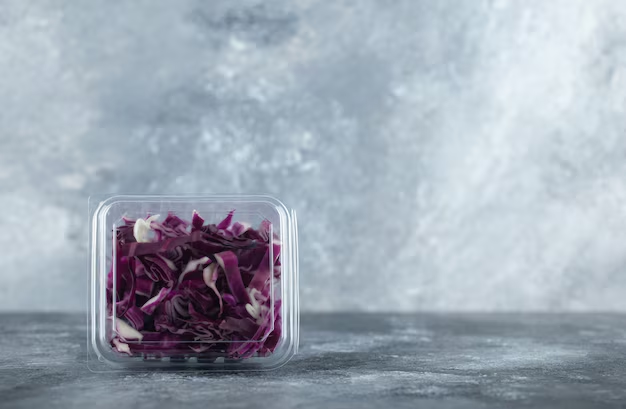The Ultimate Guide to Storing Onions: Should You Keep Them in the Fridge?
When it comes to food storage, particularly for perishables like onions, many are left wondering about the best methods to maximize freshness and shelf life. Onions are a versatile kitchen staple, used in everything from sizzling stir-fries to hearty soups. But how should they be stored, and is the refrigerator a friend or foe to this pungent bulb? Let's explore this topic in depth, ensuring your onions remain in peak condition for your next culinary creation.
🧅 Understanding Onion Storage: The Basics
Onions are a durable vegetable, but their storage needs can vary based on type, use, and environmental conditions. The key factors affecting onion longevity are moisture, temperature, and airflow. While some vegetables thrive in cold and humid environments, onions have their own set of preferences.
Types of Onions and Their Storage Needs
Yellow Onions: The most common variety, they have a robust flavor and are ideal for cooking. They prefer a cool, dry place and good airflow.
Red Onions: Often used raw in salads and salsas due to their mild and sweet flavor, these onions should also be stored in dry conditions.
White Onions: These are crunchier and less pungent, suitable for Mexican cuisine. They need similar storage to yellow and red onions.
Sweet Onions: Varieties like Vidalia and Walla Walla have higher sugar content, making them more susceptible to spoilage. They can be refrigerated to extend freshness.
Shallots and Green Onions: These have more moisture content and are generally best kept in the fridge.
🚪 The Great Debate: To Refrigerate or Not to Refrigerate?
There are strong opinions on whether onions should be refrigerated. Here's a more nuanced look:
Pros of Refrigerating Onions
- Extended Shelf Life for Certain Varieties: Sweet onions and green onions can benefit from refrigeration to prevent them from spoiling too quickly.
- Prevent Sprouting: Cooler temperatures can delay the sprouting process, especially for sweet onions.
- Moisture Retention: For onions like scallions (green onions), which have a higher moisture content, refrigeration helps maintain their crispness.
Cons of Refrigerating Onions
- Moisture Problems: Whole onions can suffer from excess moisture in the fridge, leading to mold and spoilage.
- Texture Change: Cold temperatures can alter the texture of an onion, especially when raw, leading to a mushy consistency.
- Absorption of Odors: Onions can absorb refrigerator odors, affecting their taste and quality.
📝 Best Practices for Storing Onions
To store onions properly, consider the following tips that balance freshness and flavor:
Store in a Cool, Dark Place: For whole yellow, red, and white onions, a pantry or cellar is ideal. Keep them away from potatoes, as these two can accelerate each other's spoilage.
Use Mesh Bags or Well-Ventilated Containers: Airflow prevents moisture buildup, which is crucial for preventing mold and decay.
Cut or Peeled Onions: Once onions are peeled or cut, they are more vulnerable to spoilage. These should be refrigerated in an airtight container to preserve their freshness.
Monitor Them Regularly: Check onions periodically for signs of spoilage, such as soft spots or mold, and separate any affected ones to prevent it from spreading.
Refrigerate Sweet and Green Onions: Due to their higher moisture content and sugar levels, they benefit from the fridge's conditions.
🌿 Integrating Onions into Different Recipes
Onions are a staple in many cuisines worldwide, and their versatility deserves special mention:
- Caramelized Onions: Slowly cooking onions brings out their natural sweetness, making them perfect for topping burgers or adding to quiches.
- Soup Base: Onions are foundational in countless soups and stocks, providing an essential flavor profile.
- Stir-Fry Ingredient: Quick and flavorful, onions add depth to stir-fries, pairing well with meats and other vegetables.
🧠 Should You Refrigerate Onions? Key Takeaways
Here's a summary of the best practices for onion storage:
- 🚫 Avoid Refrigeration: For whole yellow, red, and white onions to maintain texture and reduce moisture issues.
- 👍 Refrigerate: Sweet and green onions to enhance their shelf life.
- ❄️ Cut Onions: Always refrigerate in a sealed container.
- 📍 Store Separately from Potatoes: Prevents accelerated spoiling for both items.
🥒 The Ins and Outs of Onion Preservation: Additional Tips
Beyond basic storage, consider these additional techniques to ensure your onions last even longer:
Curing Onions for Extended Storage
- Dry Cure Post-Harvest: After harvesting or buying fresh onions, let them sit in a dry, well-ventilated area until the outer layers are papery and the roots have dried. This can enhance their storage life significantly.
Pickling: A Different Approach
- Preserve Flavor and Crunch: Pickling onions in vinegar and spices is a fantastic way to not only extend their shelf life but also to enjoy them as a tangy addition to other dishes.
🥗 Transitioning to Culinary Use
As you transition from storage to culinary use, remember that the way onions are stored can impact their flavor and utility in recipes. Here’s how:
Raw Dishes: Use freshly cut or slightly chilled onions in salads wherein their crisp texture is important.
Cooked Dishes: Onions that have been stored properly can enhance the flavors in cooked dishes, whether it’s a slow-cooked stew or a quick sauté.
Flavor Intensity: The storage method can slightly alter the intensity of the onion's flavor, so adjust recipes as needed.
🍽️ Conclusion: Striking the Right Balance
Ultimately, the decision to refrigerate onions hinges on variety, storage conditions, and personal preference. By understanding the pros and cons, adopting best storage practices, and considering the intended culinary use, you can enjoy fresh, flavorful onions that elevate your dishes. Proper storage not only maximizes shelf life but also maintains the quality that your recipes deserve.
Understanding these factors empowers you to make informed decisions in your kitchen, ensuring your meals are not only delicious but also efficient in terms of ingredient use. With this guide, you're now well-equipped to tackle the onion dilemma with confidence!
